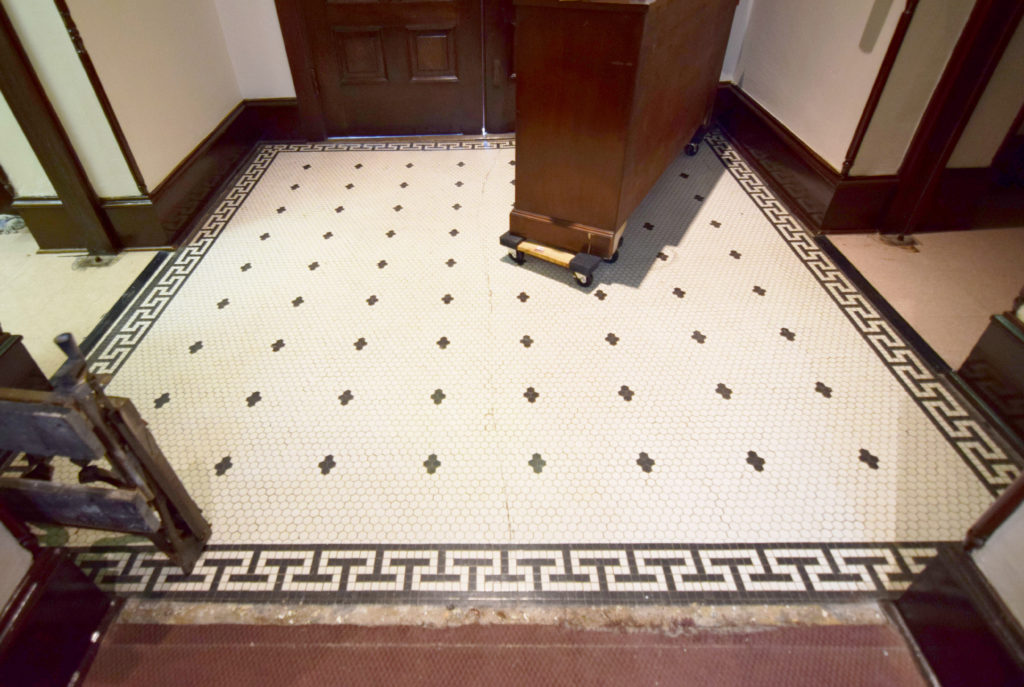Resilience Treatments & Strategies
Floor Finishes

Description
The exposed surface on top of the floor structure. It provides protection from wear to the subfloor, although it is typically not necessary to support structural loads. Floor finishes in historic buildings often have aesthetic significance (e.g., tile mosaics or parquet floors). If unprotected (such as with coatings), surfaces that experience high traffic can deteriorate from wear.
Typical risk factor of this component:
Low
Floor finishes are typically not exposed to elements such as wind and rain. Localized damage or partial failures will generally neither impact the structure’s overall stability, nor affect other assemblies.
Typical Damages from Floods or Hurricanes
- Mold growth
- Waterlogged or otherwise water-damaged finishes (e.g., buckling, bowing, cupping, or swelling)
- Substantial pest/insect infestation (e.g., termite damage in wood finishes)
Other common conditions contributing to vulnerability towards floods or hurricanes
- Nonresilient floors (e.g., wood, carpet) not protected with coatings or treatment
Resilience Treatments and Strategies
In-house
Air out the building immediately following water infiltration and saturation, limiting the use of forced ventilation to avoid drying surfaces too quickly. If mold is present, consult specialists that treat hazardous materials.
Carefully remove all finishes that are waterlogged and cannot be saved; replace with in-kind elements and refinish/restore elements that can be saved.
Professional needed [type]
- Restore decorative flooring (e.g., mosaics, parquet flooring) [building or art conservation professionals].
Floor Finishes

Description
The exposed surface on top of the floor structure. It provides protection from wear to the subfloor, although it is typically not necessary to support structural loads. Floor finishes in historic buildings often have aesthetic significance (e.g., tile mosaics or parquet floors). If unprotected (such as with coatings), surfaces that experience high traffic can deteriorate from wear.
Typical risk factor of this component:
Low
Floor finishes are typically not exposed to elements such as wind and rain. Localized damage or partial failures will generally neither impact the structure’s overall stability, nor affect other assemblies.
Typical Damages from Floods or Hurricanes
- Mold growth
- Waterlogged or otherwise water-damaged finishes (e.g., buckling, bowing, cupping, or swelling)
- Substantial pest/insect infestation (e.g., termite damage in wood finishes)
Other common conditions contributing to vulnerability towards floods or hurricanes
- Nonresilient floors (e.g., wood, carpet) not protected with coatings or treatment
Resilience Treatments and Strategies
In-house
Air out the building immediately following water infiltration and saturation, limiting the use of forced ventilation to avoid drying surfaces too quickly. If mold is present, consult specialists that treat hazardous materials.
Carefully remove all finishes that are waterlogged and cannot be saved; replace with in-kind elements and refinish/restore elements that can be saved.
Professional needed [type]
- Restore decorative flooring (e.g., mosaics, parquet flooring) [building or art conservation professionals].